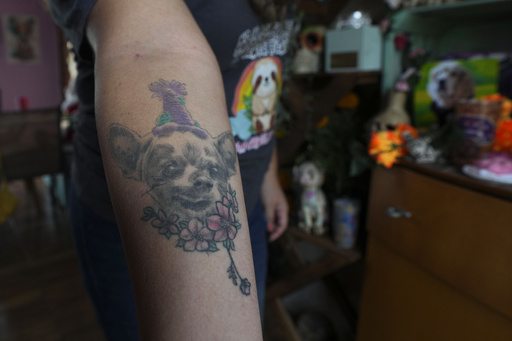
MEXICO CITY — The beloved pets of Mexicans are being honored during the traditional Day of the Dead festivities, where loyal animals like dogs and cats are given a place on altars dedicated to remembering lost loved ones. These altars are adorned with flowers, candles, and cherished photographs, ensuring that pets, too, are included in the commemoration.
While the altars for deceased humans often feature their favorite meals and drinks, honoring pets comes with its own unique challenges due to the nature of pet food. The deep-rooted celebration originates from ancient Mexican customs that also highlight the respect for animals. In pre-Hispanic times, hairless dogs were believed to assist in guiding their owners to the afterlife, sometimes receiving distinguished burials themselves.
The recognition of pets at family altars has gained momentum recently, with October 27 formally designated as the Day of the Dead for pets. The National Anthropology and History Institute has even begun offering guidance on social media about how to incorporate pets into the celebrations.
Graphic designer Meztli Lizaola honors her late Chihuahua, Taco, who passed away two years ago, by ensuring he has a special place at an altar in her living room. His ashes rest in an urn alongside his picture, which shares a shelf with a photo of Lizaola’s deceased father. The altar is decorated with vibrant cempasúchil marigolds, candles, and skull figurines, closely tying Taco to the family’s memories.
Taco, who enjoyed tacos and other traditional foods like quesadillas, cannot have his favorite meals placed on the altar due to the presence of Lizaola’s four other dogs, who might be tempted to sneak a bite. The influence of Halloween has been seamlessly woven into seasonal traditions, and many pet shops now offer a variety of Halloween costumes for pets, reflecting the growing trend.
Ethnohistorian Juan Pablo García Urióstegui notes that the evolving traditions around the Day of the Dead have been amplified in recent years, particularly as society adapts. He observed that changes are happening rapidly, with pets increasingly becoming visible in public contexts like restaurants and even during medical appointments.
In urban settings, traditional large families are less common, leading to a rise in pet ownership, where couples may refer to their pets as “perrihijos” or “dog kids.” García Urióstegui emphasized that this shift in perspective illustrates pets no longer as mere companions but as significant beings worthy of remembrance.
The historical reverence for dogs in Mexico dates back centuries, reflecting a bond that transcends time. Before the Spanish arrived in the early 16th century, the indigenous population kept xoloitzcuintles, hairless dogs cherished for their spiritual roles. These dogs were often buried alongside their owners or represented through finely crafted ceramic figurines, signifying their importance in traversing the underworld.
Lizaola continues to feel a profound absence without Taco, whose likeness she has tattooed on her arm as a tribute. Taco’s companionship significantly impacted her life, driving her and her partner to become more active in rescuing and supporting abandoned animals. Initially, there was some skepticism in her family about including Taco on the altar, a space traditionally reserved for humans. However, as more family pets passed away, the practice has become more accepted, leading Lizaola to observe, “Now it’s more dogs than humans.”
